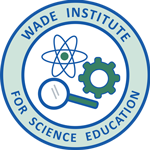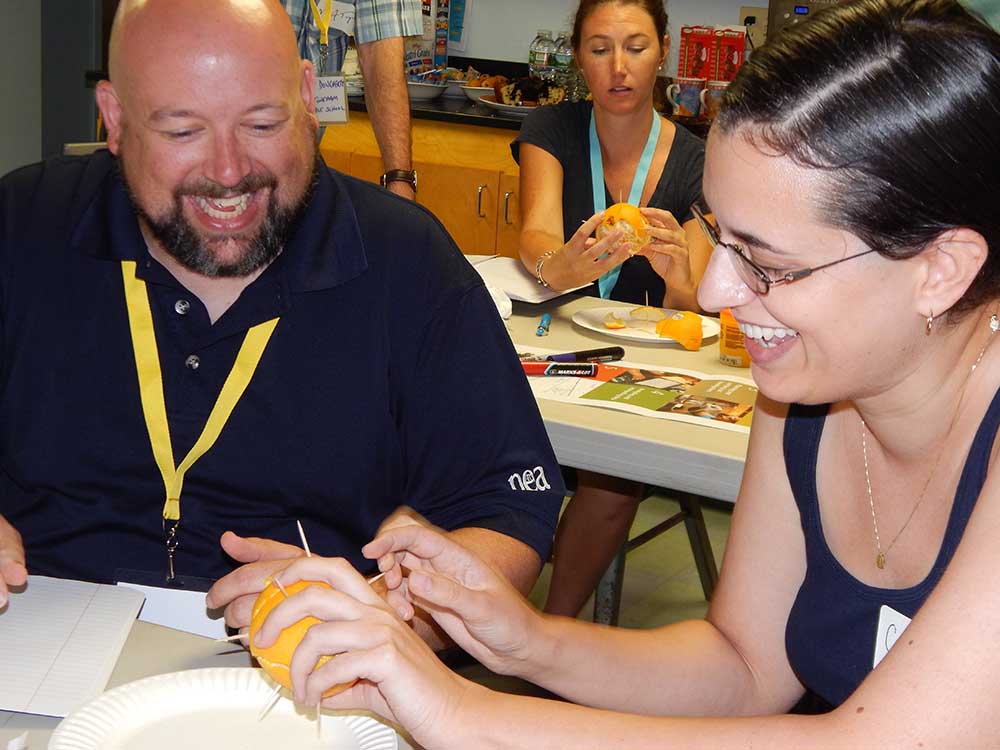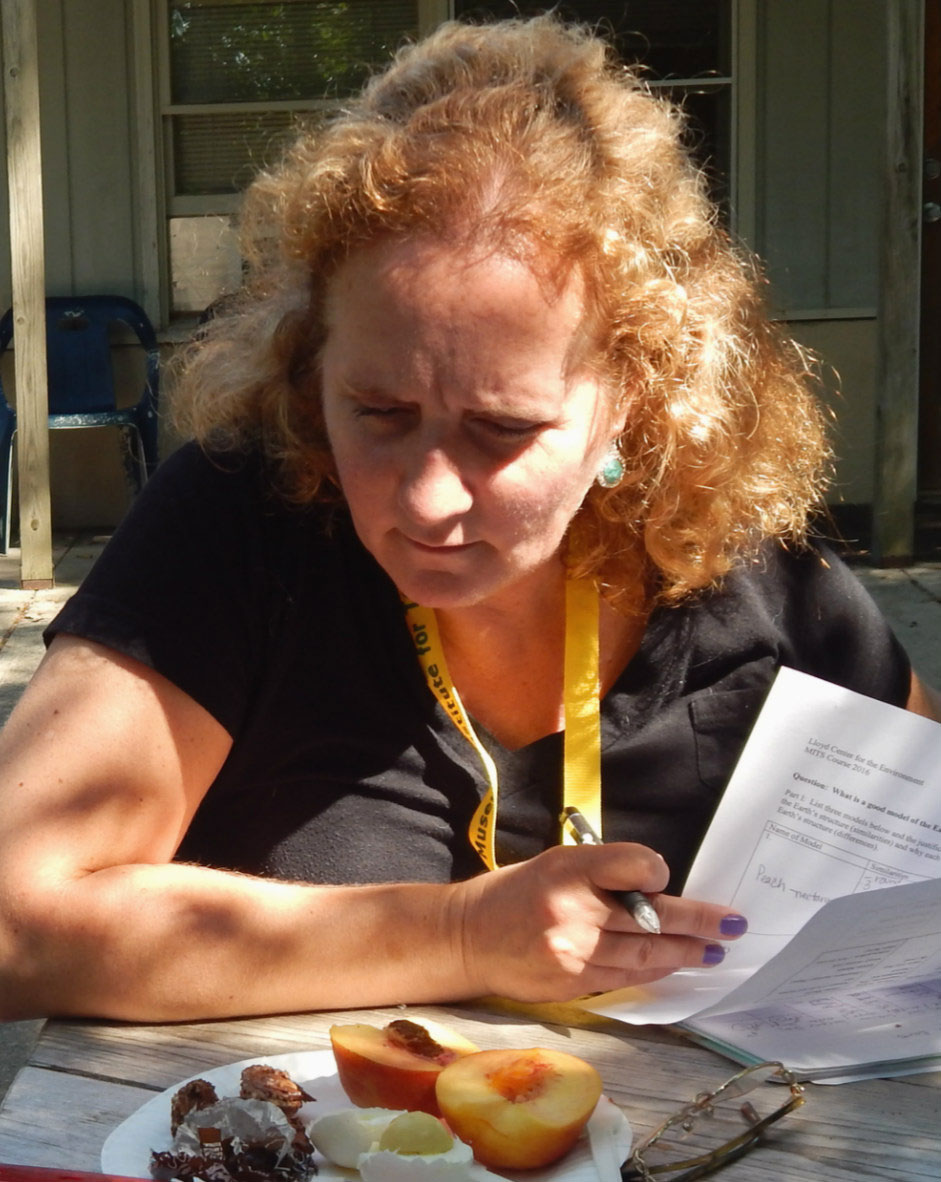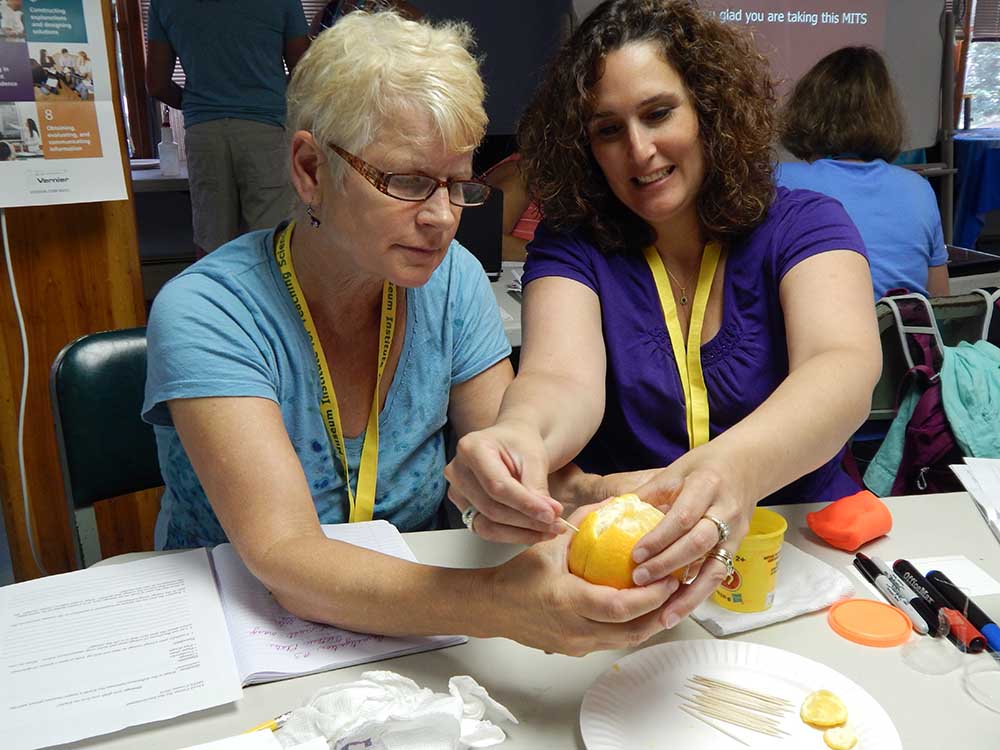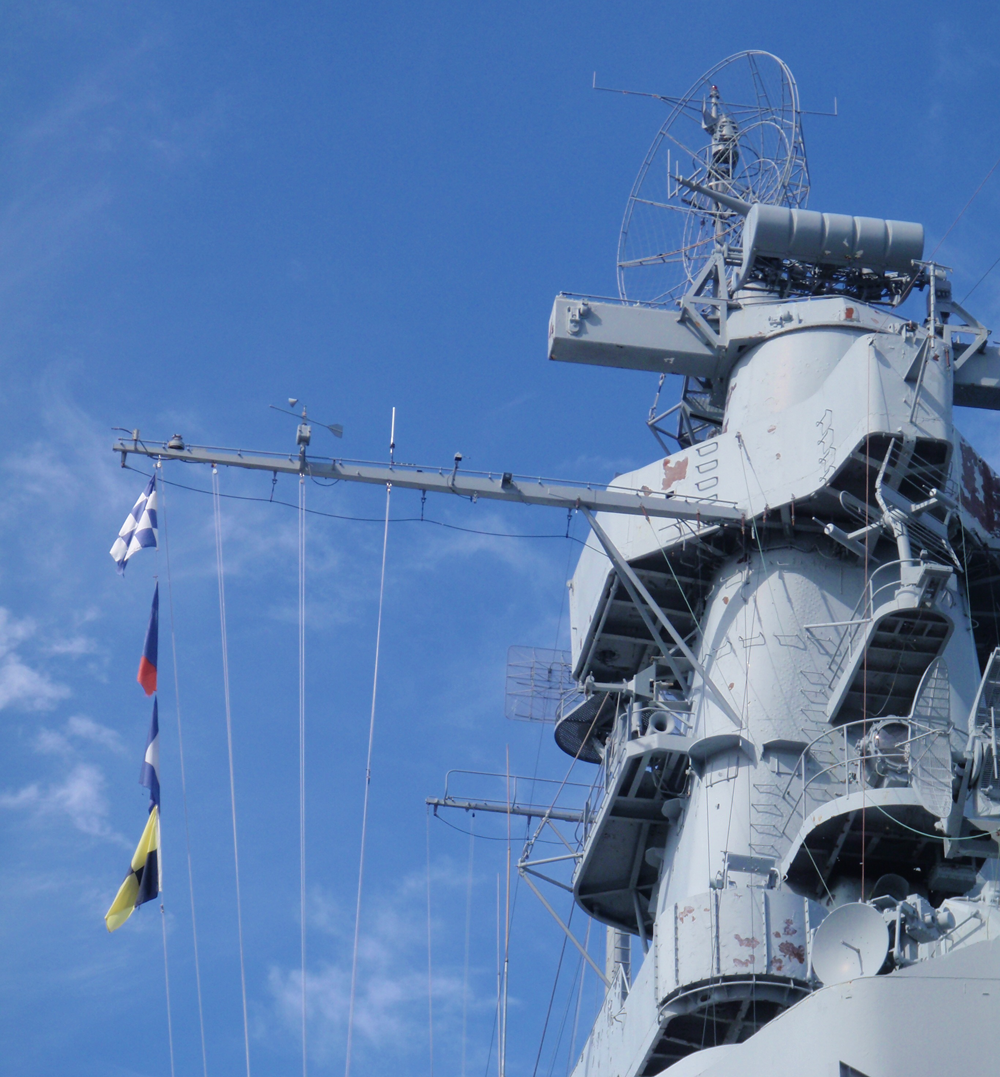Thursday, August 25, 2016
For Immediate Release
Teachers Explore Inquiry-Based Instruction of Earth and Space Science with MITS
From July 18th – 22nd, 2016, eleven 3rd through 8th grade teachers from nine Massachusetts schools had an out-of-this-world experience as participants of the Museum Institute for Teaching Science hybrid Summer Professional Development Institute, To the Moon and Back: Engaging your Students in Earth and Space Science through Inquiry. Taught in partnership with Lloyd Center for the Environment, Battleship Cove and University
of Massachusetts Dartmouth, participants explored ways to incorporate science and engineering practices into adaptable inquiry-based earth and space science lessons as they earned PDPs and graduate credit.
A day at Battleship Cove was spent carrying out weather and water investigations. Emily Bryant, Curator of Education and Volunteers, tested the teachers’ skills as Aerographer’s Mates and Water Tenders. Aerographer’s Mates used basic meteorological technologies to write up daily weather reports for the ship’s captain. Weather reports could then be used to determine daily aircraft flying conditions as well as possibilities of large waves with approaching storms. Institute participants designed and built anemometers to gauge wind speed at varying spots on the ship’s deck. These simple homemade renditions worked surprisingly well and stirred up conversations as to why the ship’s anemometer is fixed on one of the highest points.
Participants also gained familiarity with the techniques and skills involved in testing water quality. They learned that battleships filter and distill ocean water to render it potable. Simple filters were constructed as solutions to recycle blackwater and greywater. Intrigued with the concept of water recycling, participants examined their filters to determine which layer removed what debris. Highlighting possible classroom applications, participants communicated their findings to the class and expanded the topic to apply to the ship’s system.
After carrying out investigations on a decommissioned battleship, the group grounded themselves by modeling Earth’s tilted axis at University of Massachusetts Dartmouth.
What does the 23.5° tilt look like? Teachers imagined a person standing in North America. They had to appropriately tilt the globe so that a figuring (representing man) placed on the image of North America would stand upright, just as we stand upright on Earth. Professor of Physics, Alan Hirshfeld, PhD, enthusiastically discussed astronomical “current events” and new discoveries in the solar system. He showed participants how to calculate the Sun’s radius and asked them to chart Earth’s history as if it were a calendar year. Activities inspired inquisitiveness and brought astronomy into a more accessible context for students.
At the Lloyd Center for the Environment, Executive Director Rachel Stronach and Education/Outreach Director Liz Moniz presented a range of activities on topics from plate tectonics and erosion to moon phases and seasons. Stronach and Moniz used guided inquiry with the teachers, leaving extra supplies on the table to allow for creative thinking. What happened when a group of teachers was given a slew of supplies?
Teachers put their minds on modeling the moon, and they really put themselves in the project! In one model, the observer’s head acted as the Earth, giving the full perspective of moon phases as seen from a point on Earth. In another model, a participant held the sun (a flashlight) to help reveal the reasons for solar and lunar eclipses. Evidence was gathered and claims were made about Earth’s orbital relationships with the moon and sun. Participants’ outlook on their ability to use hands-on, minds-on, inquiry-based lessons was already looking sunny.
From core to crust, participants mapped Earth and led colleagues on a tour of the planet from the inside out. They also determined which would best represent the Earth: a nectarine, an orange, a chocolate covered cherry, or an egg. Thickness and viscosity of layers was a talking point amongst participants as they chose the most appropriate model. Oranges – peeled and put back together – prompted discussions about tectonic plates, boundaries, and land formations. Further investigation of changes to the earth’s crust over time included models of primary (p) and secondary (s) waves, a sediment scavenger hunt, and an erosion study. By the end of the week, participants had a world of resources with which to explore earth science with their students.
How will this information be applied to teachers’ classrooms? Based on resources provided during the institute, participants developed earth and space science unit plans for the upcoming school year. Teachers adapted their current lessons to include more inquiry levels or wrote new lessons to inspire, engage and ignite curiosity amongst their students. After all, who doesn’t love an out-of-this-world classroom experience?
The Museum Institute for Teaching Science specializes in providing hands-on, minds-on, inquiry-based
STEM professional development for formal and informal educators. For more information, visit www.mits.org or call 617-328-1515.
